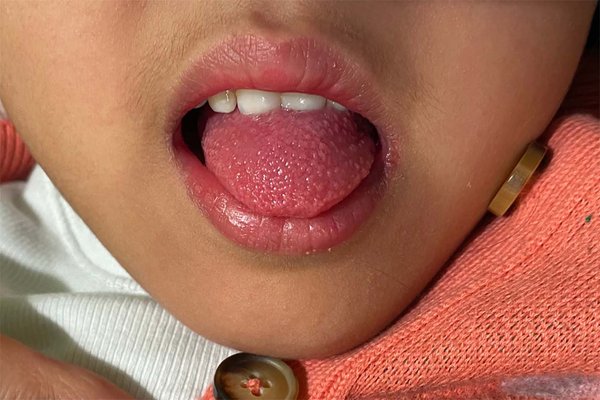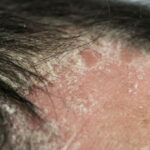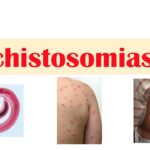Scarlet fever is a bacterial illness primarily affecting children aged 5–15. Caused by Group A Streptococcus (GAS), the same bacteria responsible for strep throat, it presents with a distinctive red rash, sore throat, and high fever. Although once considered a serious childhood illness, early diagnosis and antibiotics have significantly reduced its severity and complications.

Etiology and Transmission of Scarlet Fever
Scarlet fever stems from a streptococcal infection that produces erythrogenic exotoxins, leading to the characteristic rash.
How It Spreads:
- Respiratory droplets from coughing or sneezing
- Close contact in schools or crowded environments
- Shared objects like utensils or toys (less common)
The incubation period ranges from 2 to 4 days, during which the bacteria multiply before symptoms manifest.
Clinical Features: Signs and Symptoms of Scarlet Fever
Early Symptoms
- Sudden high fever (101°F or above)
- Sore throat and difficulty swallowing
- Headache
- Nausea or vomiting
- Abdominal pain (in children)
Characteristic Rash
- Appears 12–48 hours after fever onset
- Feels like sandpaper to the touch
- Starts on the neck, chest, and armpits, spreading to rest of body
- Skin may peel in the later stages, especially on fingers and toes
Other Distinct Features
- “Strawberry tongue”: Red, swollen tongue with white coating initially
- Flushed face with a pale ring around the mouth
- Pastia’s lines: Dark red lines in skin creases (e.g., elbows, armpits)
Diagnosis of Scarlet Fever
Clinical Evaluation
Diagnosis is typically clinical, based on symptoms and visual assessment of rash, tongue, and throat.
Confirmatory Tests
- Rapid antigen detection test (RADT): Quick results for strep A
- Throat culture: Gold standard with higher accuracy
- Complete blood count (CBC): May show elevated white cell count
Differential Diagnosis
Scarlet fever can resemble other illnesses. Accurate differentiation is vital for targeted treatment.
| Condition | Key Differentiating Features |
|---|---|
| Measles | Cough, conjunctivitis, Koplik spots |
| Kawasaki disease | Longer fever duration, cracked lips, limb swelling |
| Rubella | Milder rash, postauricular lymphadenopathy |
| Drug hypersensitivity | Rash history linked to recent medication use |
Treatment of Scarlet Fever
Scarlet fever requires prompt antibiotic therapy to reduce symptom severity and prevent complications.
First-Line Therapy
- Penicillin V (oral): 10-day course is standard
- Amoxicillin: Often preferred for children due to taste and dosing
Alternatives for Penicillin-Allergic Patients
- Cephalexin
- Clindamycin
- Azithromycin
Supportive Measures
- Adequate hydration
- Antipyretics (acetaminophen or ibuprofen) for fever
- Soothing foods and lozenges for throat discomfort
Potential Complications of Untreated Scarlet Fever
If not properly treated, scarlet fever can lead to serious systemic complications:
- Rheumatic fever
- Post-streptococcal glomerulonephritis
- Otitis media
- Sinusitis
- Pneumonia
- Abscesses or cellulitis
- Arthritis
Prompt intervention reduces these risks significantly.
Preventive Strategies and Public Health Measures
Preventing Transmission
- Isolate infected individuals for at least 24 hours after starting antibiotics
- Hand hygiene is critical
- Avoid sharing drinks, utensils, or towels
- Disinfect commonly touched surfaces
School and Daycare Policies
- Children can usually return to school 24 hours after beginning antibiotics and if fever-free
Scarlet Fever in Adults: A Rarer Occurrence
Though more common in children, adults can contract scarlet fever, particularly those in close contact with infected individuals. Symptoms are generally milder but require the same antibiotic regimen to prevent complications and halt transmission.
Scarlet Fever Prognosis
With appropriate treatment, the prognosis for scarlet fever is excellent. Symptoms typically improve within 24–48 hours of antibiotic initiation, and full recovery is expected in a week. Desquamation (skin peeling) may last for several weeks after the rash resolves.
Key Takeaways
| Feature | Summary |
|---|---|
| Causative Agent | Group A Streptococcus |
| Common Age Group | Children aged 5–15 |
| Transmission | Respiratory droplets |
| Cardinal Features | Sandpaper rash, strawberry tongue, high fever |
| Diagnosis | Clinical + throat swab or RADT |
| Treatment | Antibiotics (penicillin, amoxicillin) |
| Prevention | Hygiene, isolation, early treatment |
| Complications | Rheumatic fever, kidney inflammation, abscesses |
Scarlet fever, though largely manageable with modern medicine, demands early recognition and swift antibiotic therapy to avoid complications and limit its spread. By educating families, schools, and healthcare providers about symptom recognition, prevention, and appropriate management, we can continue to minimize the burden of this once-feared childhood disease.

